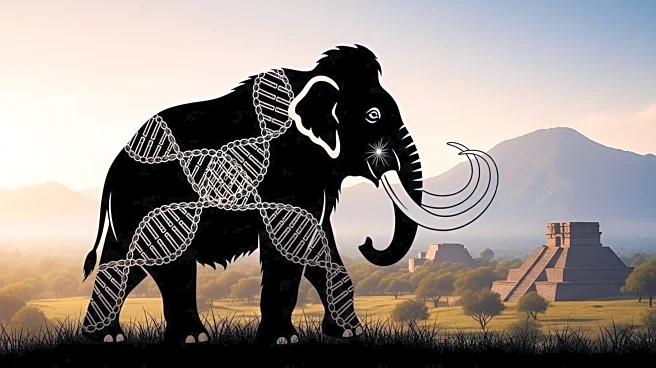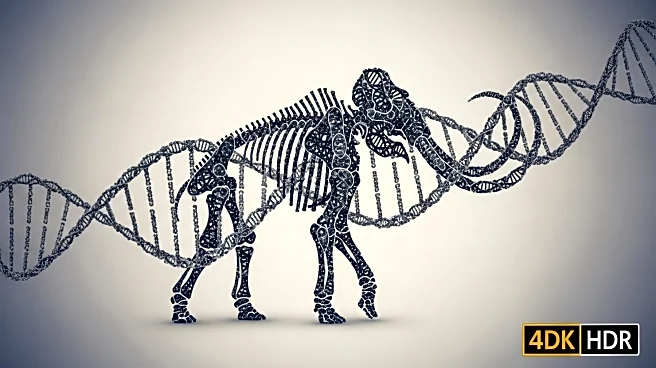What's Happening?
A recent study has uncovered a distinct mitochondrial lineage of mammoths in Mexico, referred to as Clade 1G, which is genetically divergent from other North American mammoths. This discovery was made during the construction of the Felipe Ángeles International Airport, northeast of Mexico City, where at least 110 individual mammoths were unearthed. The study, published in Science, analyzed mitochondrial DNA from these mammoths, revealing deeper genetic divergence within Clade 1G than expected. This divergence is comparable to differences between other major North American mammoth lineages. The research suggests that these divergent lineages coexisted during the Late Pleistocene, between 40,000 and 12,700 years ago, highlighting a complex evolutionary history in the region.
Why It's Important?
The findings are significant as they provide new insights into the evolutionary history of mammoths in North America, particularly in regions where DNA extraction is challenging due to warmer climates. The study emphasizes the importance of recovering ancient genomic data from diverse geographical areas to fully understand the evolutionary trajectory of extinct species. This research not only sheds light on the genetic diversity of mammoths but also demonstrates the feasibility of recovering DNA from Late Pleistocene samples in tropical latitudes, potentially opening new avenues for paleontological research in similar climates.
What's Next?
The study suggests further exploration of ancient genomic data from wider geographical ranges to better understand the evolutionary history of extinct species. Researchers may continue to investigate the genetic diversity of mammoths and other prehistoric animals in tropical regions, potentially leading to new discoveries about their adaptation and survival. Additionally, the findings could influence future paleontological excavations and studies in Mexico and other regions with similar climates.
Beyond the Headlines
The discovery of a divergent mammoth lineage in Mexico raises questions about the migration and adaptation patterns of prehistoric animals in North America. It also highlights the potential for uncovering new genetic information from regions previously considered challenging for DNA analysis. This could lead to a reevaluation of the evolutionary history of other extinct species and provide a deeper understanding of the biodiversity that existed during the Late Pleistocene.











